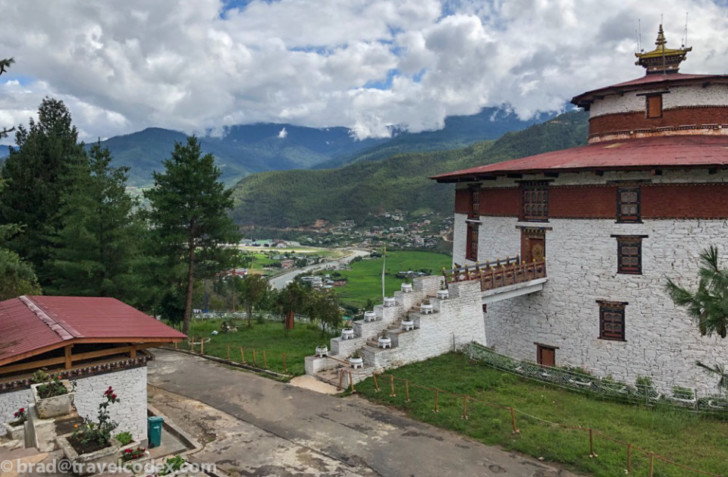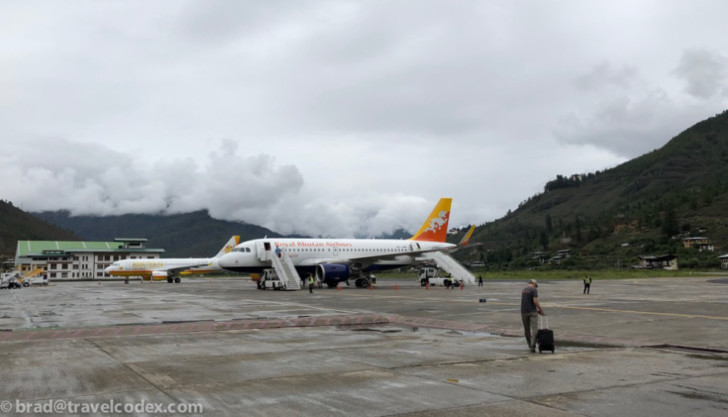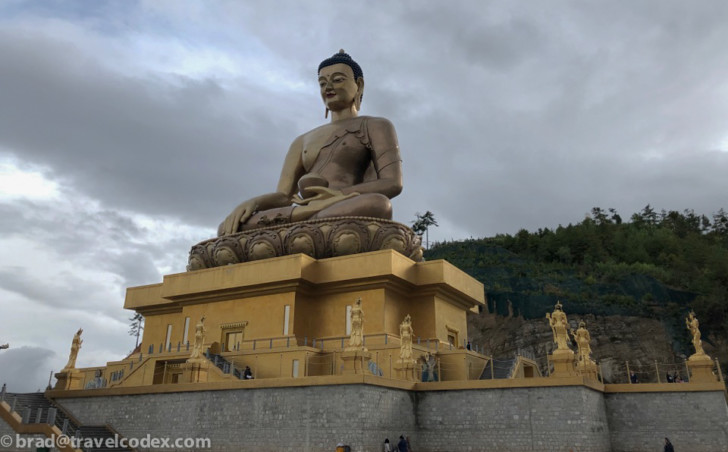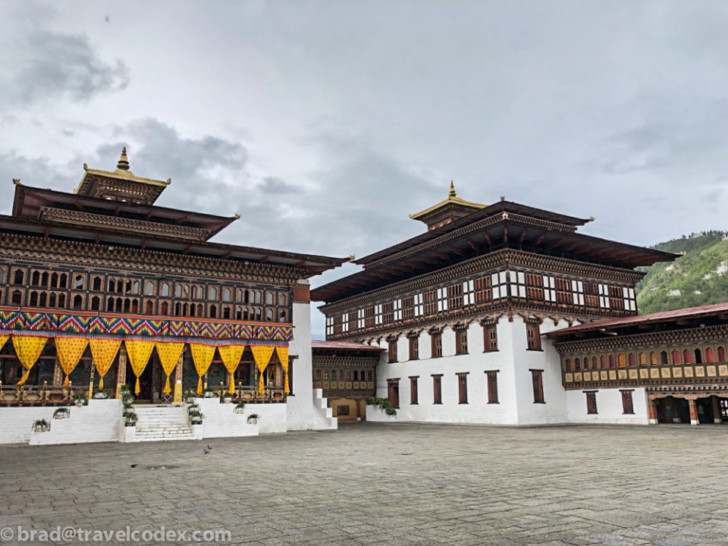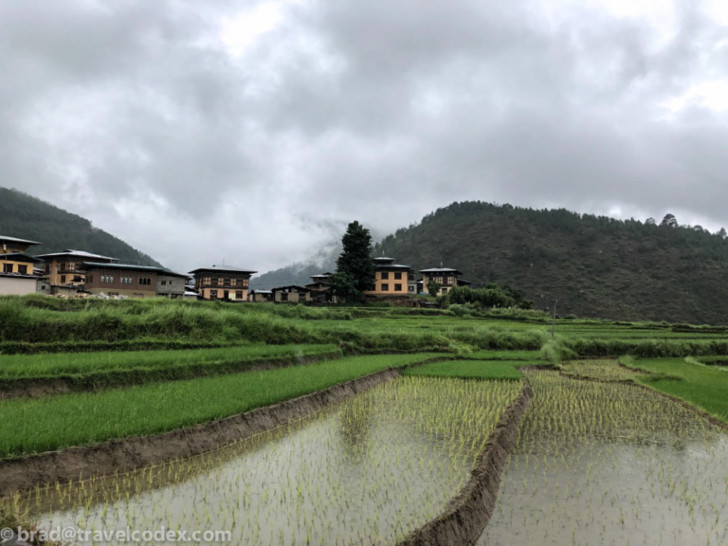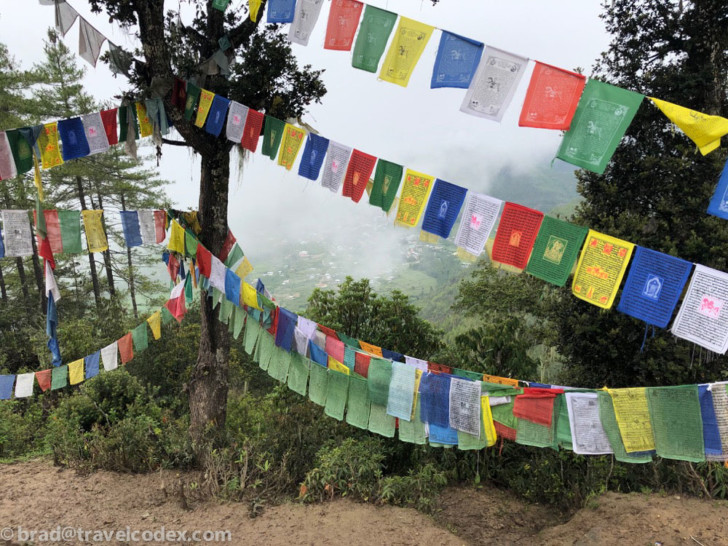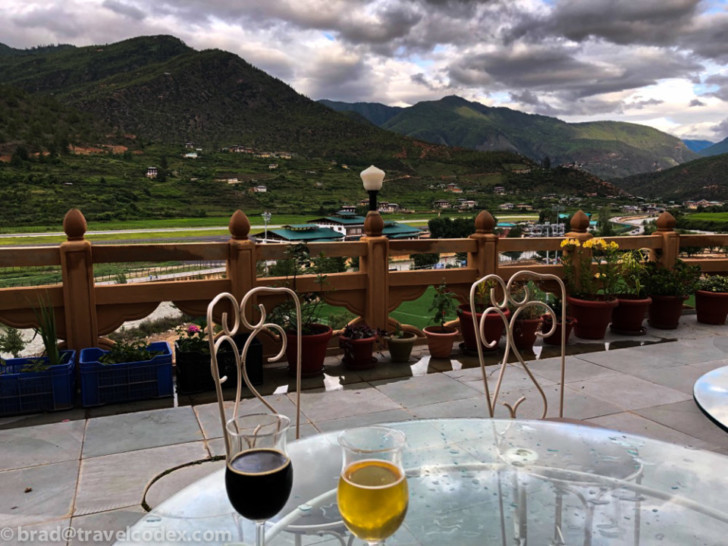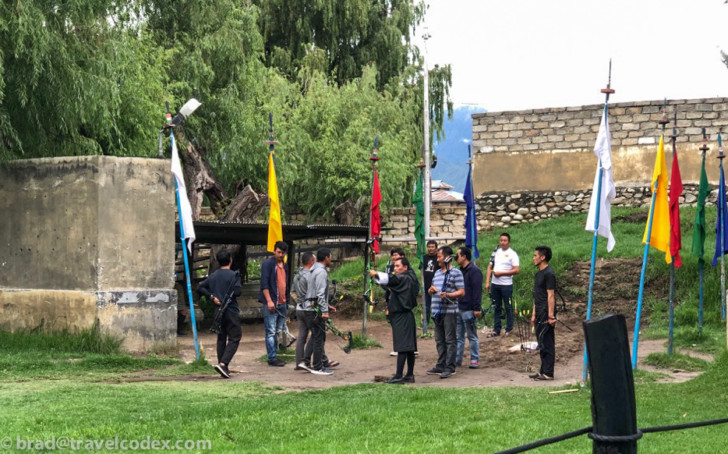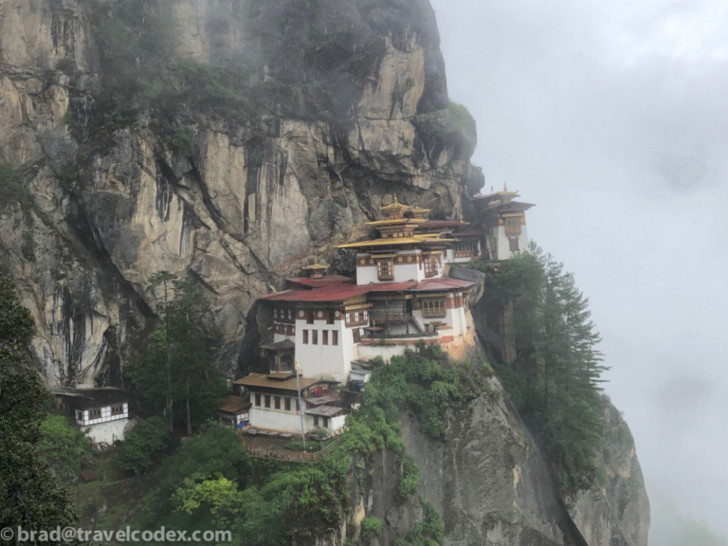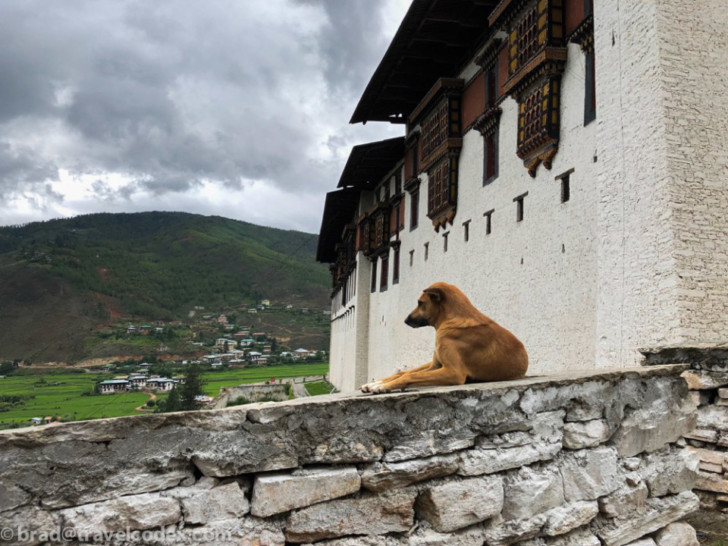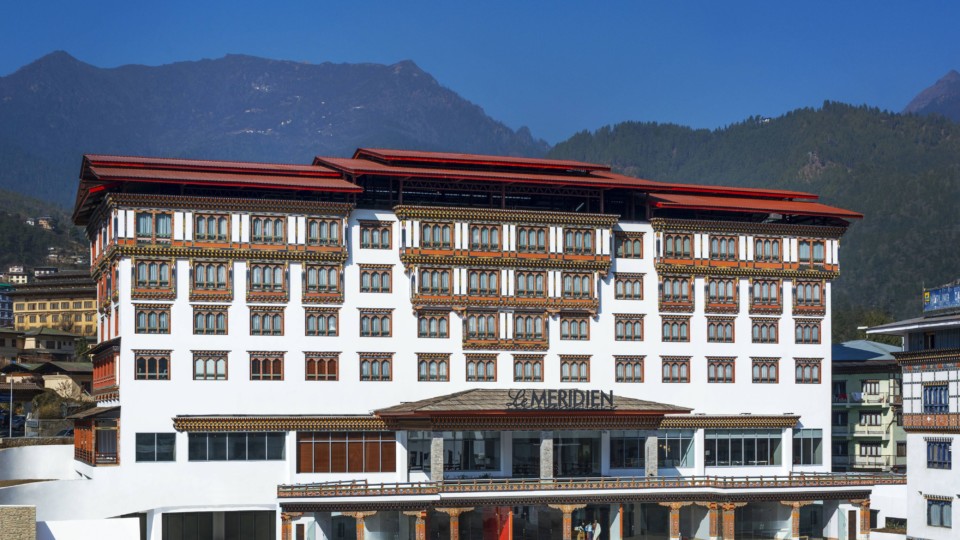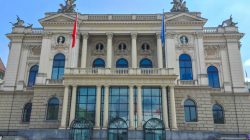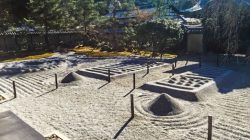The first of two main destinations on our trip is the Buddhist kingdom of Bhutan. This post is a review of our time spent here. We stayed 4 days, which I feel is enough to scratch the surface, and see many highlights. Get ready for lots of natural beauty, countless Buddhist temples and lots of phallic symbols.
We settled on a 4 day trip to fit around our other travel plans (mostly our time in Nepal later on), and to control costs, since visitors to Bhutan have to pay a daily tourist fee. In high season, this is $250 per day, but in December-February and June-August, the cost is $200. This includes:
- A minimum of 3 star accommodation (4 & 5 star may require an additional premium).
- All meals
- A licensed Bhutanese tour guide for the extent of your stay
- All internal transport (excluding internal flights)
- Camping equipment and haulage for trekking tours
Other than purchases of items not included such as souvenirs and alcohol, you could get by on just this fee. There is also a $40 visa fee for visitors except those from India, Bangladesh and the Maldives. Clearly not a cheap place to visit, especially for this part of the world, but its not totally unreasonable and it makes for lack of crowds, especially this time of year. We spent one night at the Le Meridien Thimphu which I paid for, and the other 2 nights were in Paro, at a hotel arranged by our tour company. We paid $715 per person for our 4 days here (I guess 3+ days really), and other than some drink, and items to bring home, we didn’t spend much else.
Arrival in Bhutan
We arrived into Paro in the morning on our Drukair flight from Delhi and met our tour guide after clearing customs. A small airport, with only our A319 arriving at this time, it was maybe a 10 minute wait for customs. By the time we were through, bags were already coming out. Before meeting our guide I bought a sim card just outside the baggage hall. I have T-Mobile, and Bhutan was the first place I’ve visited in a while that is not included in their plan. For about US $5, I bought a sim card with a large data package, which was more than enough for my time there. The sim card was already activated, and most of the time I had at least 3G service, with LTE in cities. There are 2 providers, and either seem to work fine, but I opted for B-Mobile. I brought a passport photo and a copy of my passport to speed things up. Both are needed to get a sim card in Bhutan. The airport agent can make copies/take photos if needed.
Our guide and driver
Once I was re-connected to the world, we went outside and met our guide and driver. They would be with us the whole time during our trip. Our guide was friendly, and spoke excellent English (as well as Hindi). Our gregarious driver was hesitant to speak English, but we managed to communicate without too much trouble. We booked our trip with Raven Tours based on some research I did beforehand. I don’t have anything to compare it to, but I don’t hesitate to recommend them for Bhutan trips. They offer lots of options, and while they clearly have some set itineraries and destinations, they are very flexible with timing, both planning the trip, and changing things on the fly when in country. Several times we asked about something we saw along the way, and we’d stop, and go check it out.
I’m much more used to traveling solo or with family/friends rather than a guide. I never felt constrained in terms of what we could see, but I can’t help but feel like sometimes we went to places on a tourist circuit, but that is to be expected. I didn’t encounter any scams such as being brought to shops where the guide gets a kickback. While our guide was around most of the time, its not like we weren’t free to roam around without him if we felt like it.
From Paro to Thimphu
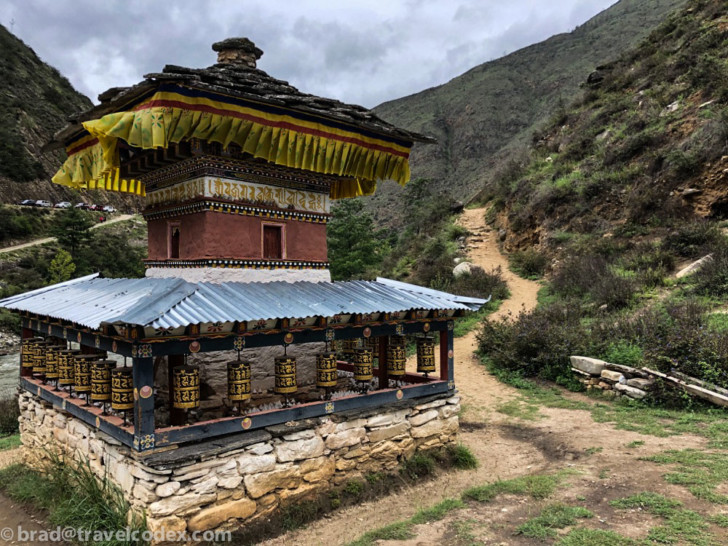
Once we got into the car, we left the Paro airport and started heading towards Thimphu, making a few stops along the way. The first was at a 700+ year old iron chain bridge. It crosses a river near the base of a temple, both of which were built by Thangtong Gyalpo.
We saw some sites in Thimphu, including a huge Buddha statue, with a nice view of the valley.
Thimphu is the commercial and governmental center of Bhutan. Lots of construction all around, and it seems that this is where much of the country’s economy is focused. We happened to be there on a Buddhist holiday, so people were off work, and when we visited the Memorial Chorten, it was quite busy with people walking around. There were a few ceremonies going on, and it was interesting to be here on a holiday. We had dinner in a traditional restaurant (as the only guests…) and this is where we first tasted Tibetan butter tea. This salty, buttery drink is popular in the Himalayas, and we had it multiple times during our trip in Bhutan and Nepal.
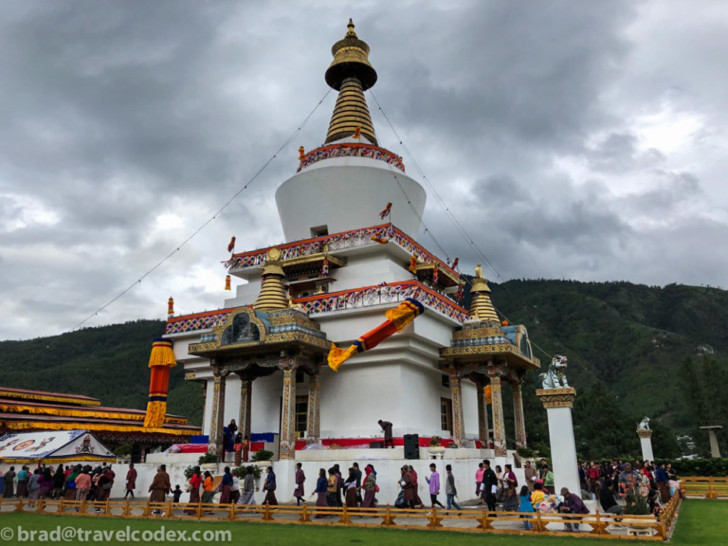
We also visited the Tashichho Dzong, the seat of Bhutan’s government. There are countless temples and shrines inside.
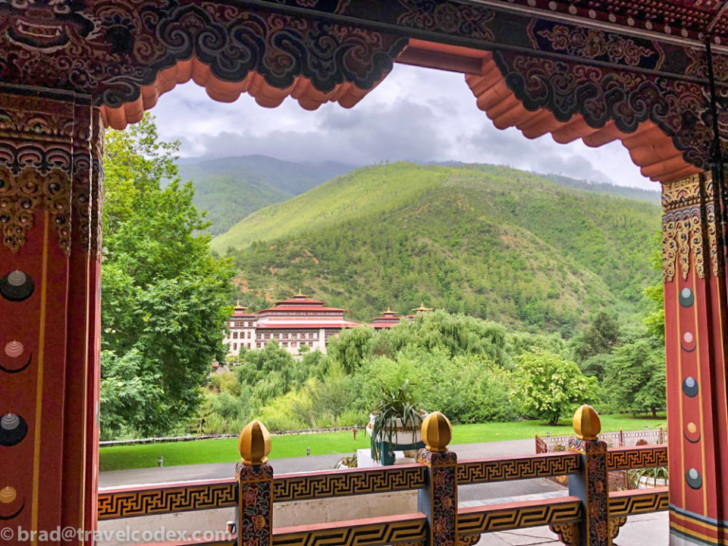
After a busy first day, we returned to our hotel for a well earned rest. The next day we headed further inland, to Punakha, the historic national capital and a center of rice production in Bhutan.
Punakha
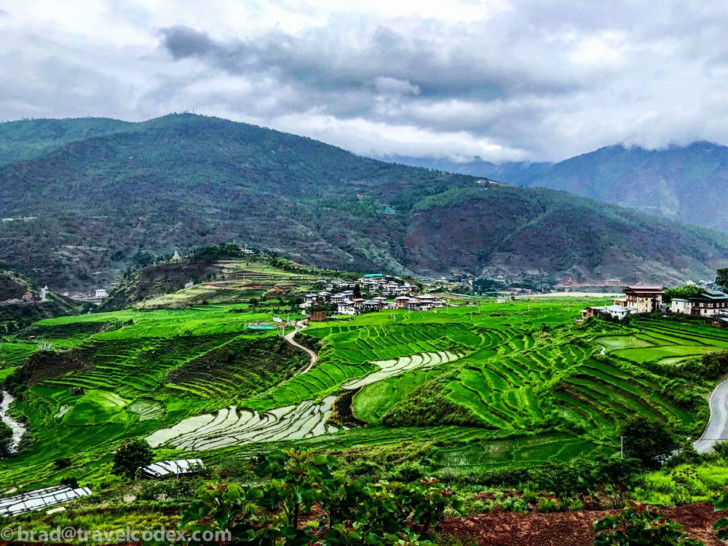
The drive to Punakha is around 3 hours from Thimphu, much of it downhill, at an elevation of 1240 meters (4075 feet) as opposed to Thimphu over 2300 meters (7657 feet). The lower elevation makes this area a prime rice growing region. Along the way we stopped at some roadside stalls selling fruit and vegetables. I was a bit hesitant to eat raw vegetables, but decided to go for it. Fresh cucumber with some chili flakes is a tasty snack on the road. We also bought some passionfruit which I always enjoy. No ill effects from either.
Also along the way from Thimphu we crossed Dochula pass, high in the clouds. There are 108 (an auspicious number to Buddhists) chortens here. Also we saw several friendly dogs here and all over Bhutan:
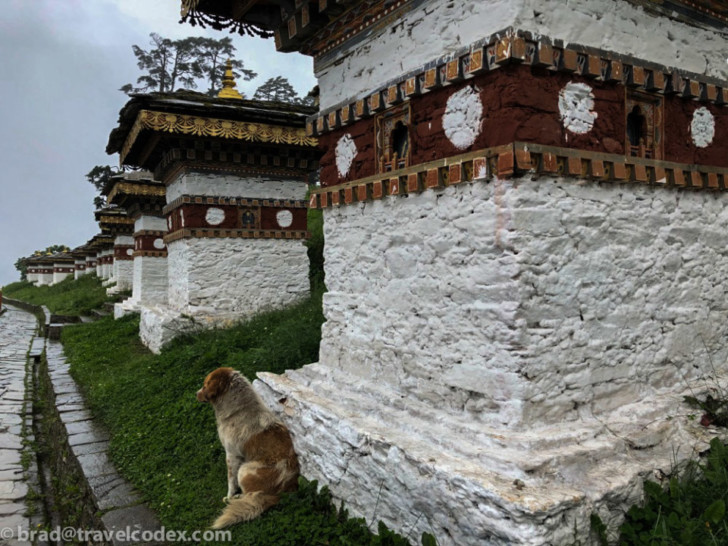
After a lunch break, we walked through some rice fields, and onward to another temple. This one rather different than the countless others we visited while here. Rather than post photos, I’ll just share this link. It was blessed by the “divine madman” Drukpa Kunley, who is credited with starting the tradition of phallus symbols in the region. These are painted on buildings, and sometimes placed above doors. Near this temple there are many shops selling phalluses of all kinds. It is unique, especially in an otherwise rather conservative place such as Bhutan.
It was nice to get out and walk through these fields, and to see how labor intensive rice cultivation is. Plenty of rain here, especially during monsoon season, but the irrigation systems are rather impressive.
Paro
After Punakha, we returned to Paro, where we spent the next 2 nights. We were at the Tashi Namgay Resort, which overlooks the Paro airport. This is a tourist hotel, presumably 3/4 stars. We stayed in a deluxe cottage, and we had breakfast at the hotel. Perfectly fine. Better yet, it is just down the road from a craft brewery. We enjoyed a few local brews, watched a plane land in the steep valley, and a local soccer match.
Another thing we witnessed was Bhutan’s national sport, archery. There are many archery ranges all over. Our itinerary had us dressing up in traditional attire and practicing archery, with equipment like a compound bow case, but apparently we ran out of time of that. We did go to a range, and watch a friendly match between friends. Gambling ups the stakes for the participants and some spectators.
One night, we had dinner with a local family on their small farm on the outskirts of Paro. Clearly this is another source of income for the family, who like many Bhutanese are mostly subsistence farmers. The meal was excellent, fresh and tasty food, much of it grown in their farm. We ate our meal on the floor of their living/dining room, with the woman who owned the farm, her husband, and their super cute ~7 year old nephew. It was a neat experience. Before we ate, we relaxed with a hot stone bath. Not usually a bath person, and both my friend and I are a bit too tall to fit well in the wooden tubs, but it was a nice relaxing experience after our hike to the Tiger’s Nest earlier in the day.
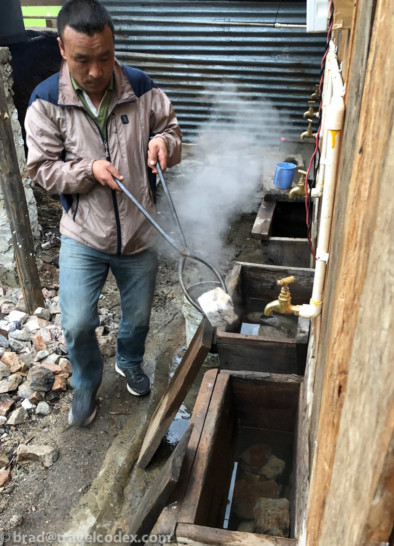
Climbing to the Tiger’s Nest
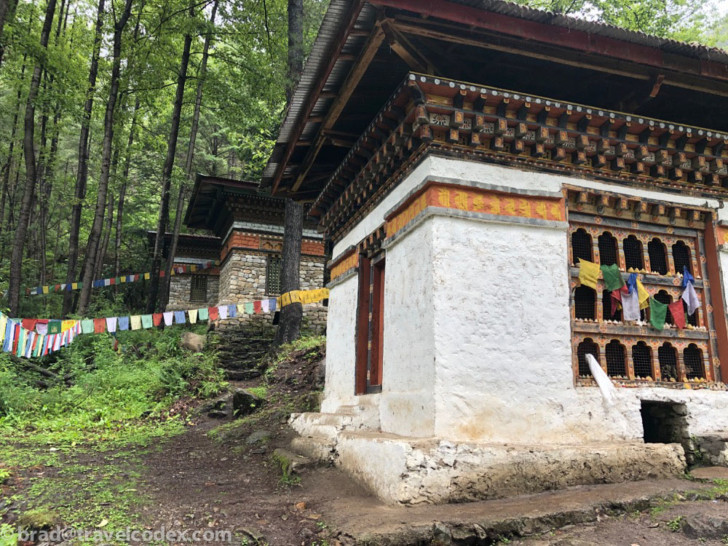
The next day the first item on our itinerary is a trek to the Tiger’s Nest. This is probably the most famous tourist destination in Bhutan. It is a Buddhist monastery built into a cliffside in the upper Paro valley. The temple is located at 3120 meters (10,240 feet). We had some rain on our walk, but eventually we got a clear view on our trek.
Our guide was trying to determine how long it would take us. I’m not super competitive, but we didn’t want to disappoint him. This was the only place we say lots of other tourists during our time in Bhutan. We got to the trail head, and started walking. There are small shops selling souvenirs, as well as walking sticks for rent. There are also horses that can be rented, but it seems they only go part way. The trek is long, and certainly a lot of climbing, but it is a very gradual ascent. There are stairs in a some areas as well. People of all ages make the hike, I didn’t find it difficult at all, other than maybe feeling the effects of elevation especially as we got higher. It took us maybe 3 hours round trip. It seems that many people take much longer than that.
Unless mobility is a problem, a trip to the Tiger’s Nest is a must stop. On a clear day the views would be amazing. There is certainly a lot of walking in all the areas we visited, but especially up to Tiger’s Nest. That was mostly by (our) choice. Not necessarily strenuous, but maybe not for everyone if not prepared.
Final thoughts on our time in Bhutan
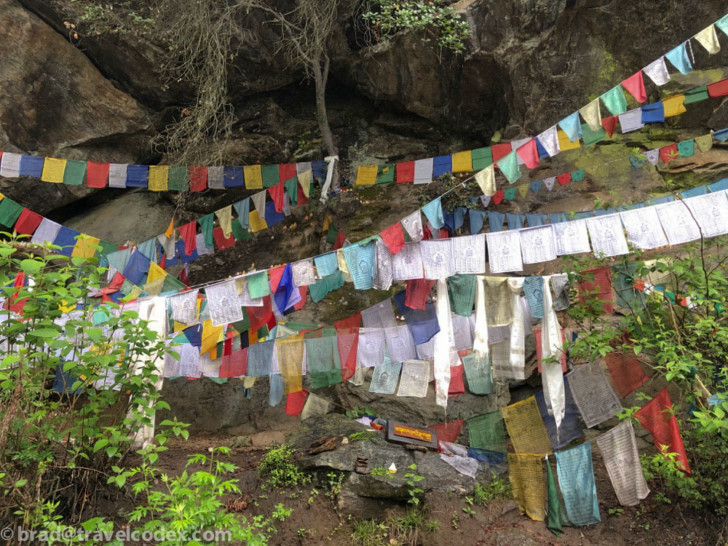
There are Buddhist prayer flags all over Bhutan, and especially along the Tiger’s Nest trail. Buddhism is such an part of Bhutanese culture, it is everywhere. I learned a lot about the religion during our time there, rather fascinating. Along the way there were some locals putting up flags. It is easy to spot locals based on their traditional attire, but especially in cities, younger people dress like young people anywhere. Jeans, hoodies, and a lot of football shirts.
I really enjoyed our short visit. It is truly a unique place. Not sure I’ll make it back there, certainly I don’t expect to do so soon. I think we hit many highlights for the 4 days we had. Much of the country’s land is in high mountains with no road access. There are week(s) long treks to get to these mountain areas, and I’m sure this would be amazing. Some day maybe. We got to get off the tourist trails when we went to Nepal, and I’ll discuss that later.
So how did Bhutan get to be this way? While it is a Buddhist majority country, it wasn’t always such a dominant religion. It is peaceful, with much natural beauty and a great place to visit. They are known for promoting Gross National Happiness rather than Gross National Product. A nice concept, and it is on many t-shirts, but it kind of papers over the ethnic cleansing that occurred to get to this point. Nearly 1/6 of the population consisting mostly of Hindus of Nepalese origin were forcibly expelled from the country due to not integrating into the Buddhist culture. Even now, many locals, especially outside the tourist hubs are quite poor subsistence farmers. Of course, the people we interacted with are warm and welcoming.
I heartily recommend visiting this beautiful place. Still, I can’t ignore the bad the has help lead to the good.
